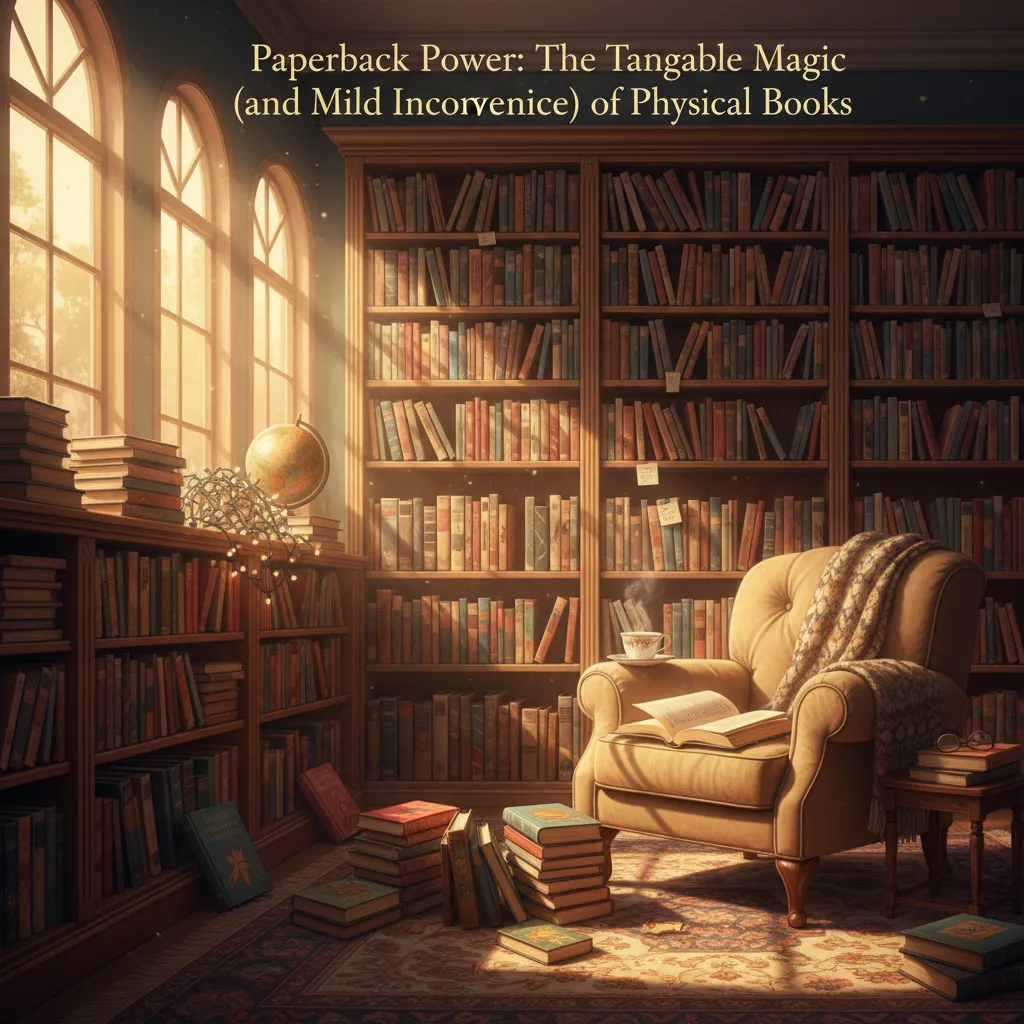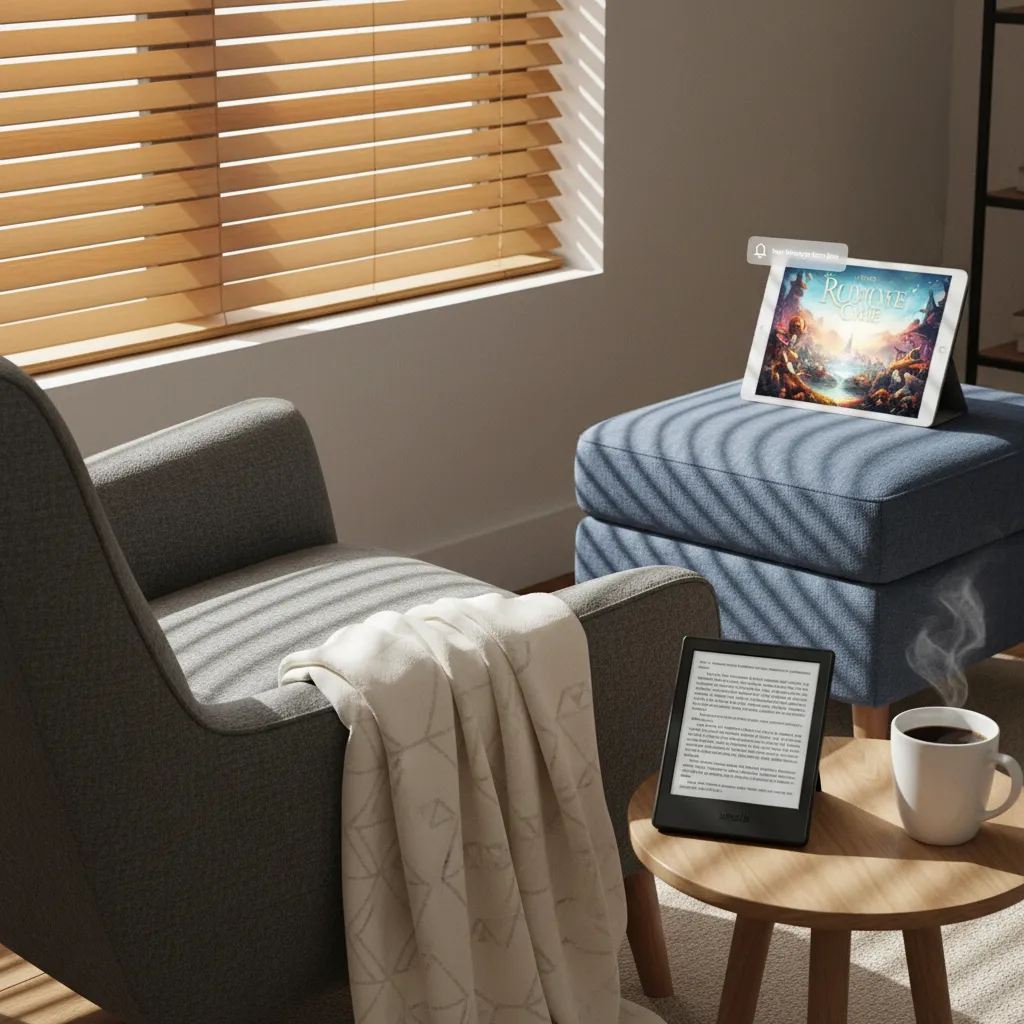Story time: There was a time the author thought the biggest reading dilemma was what to read next. Fast forward to 2025—now, the real struggle is how to read: Should you lug around that battered paperback, settle under the blue light glow of a Kindle, get swept up by an audiobook on your commute, or multitask by skimming an eBook on your phone? In this playful—and brutally honest—exploration, one book-obsessed human tries (and sometimes fails spectacularly) to untangle the mystery: Is there such a thing as the 'best' way to read? Expect sidetracks, strong opinions, and perhaps, a few messy experiments gone wrong.
Paperback Power: The Tangible Magic (and Mild Inconvenience) of Physical Books
In the endless debate about the best learning methods and reading strategies, physical books have a way of quietly holding their ground. Despite the rise of Kindles, iPads, and audiobooks, there’s a certain magic to holding a paperback that digital formats just can’t match. For many, the journey of reading comprehension teaching still begins with the turn of a real page.
Affordable Access: The Price of Paper
One of the biggest perks of physical books is their affordability. New paperbacks typically range from $5 to $20, making them accessible for most readers. But the real secret is in secondhand bookstores and public libraries, where treasures can be found for a few dollars—or even for free. For budget-conscious readers or those building a home library, nothing beats the thrill of a library card or a well-timed thrift store find.
- New books: $5–$20
- Secondhand/library: Free to a few dollars
Convenience: The Paperback Predicament
Here’s where the romance of paperbacks meets reality. As much as readers love the idea of carrying a book everywhere, the truth is less glamorous. Books are bulky. They get smushed in backpacks, bent at the corners, and sometimes forgotten at the bottom of a tote bag. Compared to digital devices that can store thousands of titles in a slim shell, the humble paperback scores low on convenience.
| Category | Rating (out of 5) |
|---|---|
| Aesthetics | 5 |
| Convenience | 1 |
| Note-taking | 3 |
| Durability | 3 |
Aesthetics: The Sensory Experience
If there’s one area where physical books are unbeatable, it’s the aesthetics. Readers often say,
“There’s something nice about reading a physical book...it feels nicer to sit down and read a physical book than just to sit down and read the Kindle.”
The feel of the cover, the weight in your hands, the whisper of turning pages, and even the smell of paper—these details create a sensory experience that digital formats can’t replicate. For many, the act of reading a physical book is a ritual, a way to slow down and escape the glare of screens. The visual appeal of a well-stocked bookshelf or a favorite dog-eared novel is a joy in itself.
Note-Taking: Old School, Not Always Efficient
When it comes to reading comprehension teaching and study strategies, physical books offer a classic approach to note-taking. A pencil in the margin, a sticky tab marking a key passage—these are time-honored tools. However, this method is rarely convenient. It requires carrying extra supplies and, often, the intention to revisit those notes later (which, let’s be honest, doesn’t always happen).
- Manual note-taking aligns with traditional study strategies
- Less efficient than digital highlighting or search functions
- Requires pencils, highlighters, or sticky tabs
Durability: Tough, But Not Invincible
Paperbacks are surprisingly resilient. You can drop them, toss them on the floor, or cram them into a crowded bag, and they’ll usually survive. But they have their weaknesses. Water is the enemy—one spilled drink or a rainy commute, and your book may never recover. And as many readers have learned, reading in the bath or on the toilet is a gamble.
“If you pour water on books, they don’t do particularly well...I used to spill water on my Harry Potter books when I used to sit and read them in the toilet, and they would just end up dying.”
Best For: Unplugging and Unwinding
Physical books shine brightest when it’s time to unplug. They’re perfect for winding down in the evening, escaping screens, or for those who secretly judge Kindle covers at coffee shops. For all their mild inconveniences, paperbacks offer a reading experience that’s as much about the senses as it is about the story.

Digital Dreams: Kindle, Tablets, and the Unexpected Joys (and Irritations) of e-Reading
Kindle: The Gateway to Instant Reading
Step into the 21st century, and the Kindle stands tall as a digital reading icon. With an upfront cost averaging $69–$99, it’s not the cheapest gadget, but for many, it’s a game changer. As one reader put it,
“The Kindle is one of my top three most life-changing pieces of tech.”The real magic of Kindle isn’t just in its slim profile or featherweight build—it’s in the way it removes friction from the reading process. Any time a friend recommends a book, you can hop onto the Kindle Store, buy it, and start reading within seconds. No waiting for deliveries, no hunting through bookstores. For those who crave immediate access, it’s a revelation.
Reading Apps Comparison: Kindle vs. Tablets and Phones
The digital reading landscape is no longer just about dedicated devices. Today’s readers blend Kindle, iPad/tablet, and phone apps depending on context. The Kindle Paperwhite or Oasis offers a focused, distraction-free experience, but if you already own a tablet or smartphone, the Kindle app (or Apple Books, Kobo, etc.) lets you dive into your library anywhere, anytime.
- Kindle: Best for immersive, eye-friendly reading with e-ink.
- iPad/Tablet: Great for split-screen note-taking, hands-free reading, and multitasking.
- Phone: Ultra-portable, perfect for reading in transit or squeezing in a chapter during life’s tiniest gaps. As one reader shared,
“I was reading A Song of Ice and Fire on my phone…while standing up in the carriage.”
Digital Reading Resources: Cost, Convenience, and Sales
When it comes to digital reading resources, the cost of Kindle books is usually on par with physical copies. However, Amazon frequently runs sales, with many titles dropping to 99¢ or even less. Over time, this can add up to significant savings—especially for voracious readers. But the real value is in convenience. Whether you’re curled up in bed, on a beach, or waiting in line, your entire library is just a tap away.
| Device/App | Convenience | Aesthetics | Note-taking | Durability |
|---|---|---|---|---|
| Kindle | 5/5 | 2/5 | 4/5 | 3/5 |
| iPad/Phone | 5/5 | 1/5 | 5/5 | 3/5 |
Kindle vs Physical Books: Aesthetics and Experience
For all its strengths, the Kindle can’t quite match the charm of physical books. The e-ink screen is easy on the eyes and far superior to reading on a bright tablet or phone, but the device itself is utilitarian. It lacks the tactile pleasure of turning pages or the scent of paper. In terms of reading aesthetics, the Kindle scores a modest 2/5, while tablets and phones trail at 1/5. Still, for late-night reading or travel, nothing beats the practicality of digital.
Note-Taking and Highlighting: The Digital Edge
Where digital truly shines is in note-taking and highlighting. The Kindle’s highlight system, especially when paired with tools like Readwise and Notion, is a game changer for digital bookworms. You can highlight passages, export them, and have them automatically synced to your favorite note-taking apps. This integration boosts the long-term usefulness of your reading, making it easy to review and apply what you’ve learned. On iPad or phone, typing notes is even easier—virtual keyboards are faster and more comfortable than the Kindle’s sluggish touchscreen. For anyone using the SQ3R reading method or other reading strategies that require active engagement, these features are invaluable.
- Kindle Note-taking: 4/5 (great for highlights, slow for typing)
- iPad/Phone Note-taking: 5/5 (fast, fluid, exportable)
Durability and Everyday Use
Neither Kindles nor tablets are indestructible. Kindles are a bit more rugged, but both can be damaged if dropped or crushed in a bag. Most readers simply slip their device into a case and hope for the best. For those who read by the pool, the waterproof Kindle Oasis might be tempting, but for most, the standard models suffice.
The Surprising Bliss (and Occasional Annoyance) of Digital Reading
Digital reading isn’t perfect, but it’s never been easier to hop between books, highlight insights, and sync notes across devices. Whether you’re a Kindle devotee or a tablet multitasker, the right combination of reading apps and digital resources can transform the way you read, learn, and remember.

Audiobooks in the Wild: When Reading Means Listening (and Living) on the Go
There is a certain magic in the way audiobooks have redefined what it means to read. Once, reading was something you did in a chair, book in hand, eyes on the page. Now, thanks to digital reading resources like Audible and its competitors, reading can happen almost anywhere—while walking the dog, folding laundry, or even waiting in line at the grocery store. In fact, for many busy adults, audiobooks have become the best learning method for squeezing more books into their lives, turning “dead time” into surprise learning time.
For about $15 a month, services such as Audible offer a subscription that gives you one audiobook credit monthly—enough to claim a new title and dive in, no matter where you are. While Audible is by far the most popular, it’s not the only option out there, but its library and user experience have made it a favorite among audiobook fans. As one dedicated listener put it,
'If there was only one subscription service I could have...it would be Audible.'
The benefits of audiobooks are easy to see, especially for those who struggle to find time to sit down with a physical book. Audiobooks maximize every spare moment. Suddenly, your commute becomes a classroom, your morning jog a journey through history or fantasy, and your kitchen chores a front-row seat to the latest bestseller. Even the most mundane tasks become opportunities for discovery and growth. For anyone looking to boost their reading habits or searching for effective reading intervention programs, audiobooks offer a flexible, accessible solution.
Of course, there are some quirks to this method. Note-taking, for one, is not as simple as scribbling in the margins or dog-earing a page. When you’re listening, it’s hard to pause, jot down a thought, and then jump back in without breaking the flow. Some listeners use separate apps or notepads, but it’s not quite the same as having a physical book in hand. And while you can bookmark sections digitally, you can’t quite “dog-ear” a passage with your mind—at least, not yet. Still, for many, the trade-off is worth it. The freedom to read while moving through life outweighs the inconvenience of analog note-taking.
Audiobooks are especially perfect for commuters, multitaskers, and anyone who loves a good narrator’s voice. There’s something special about hearing a story told by a skilled performer—someone who brings characters to life and adds a new dimension to the text. For some, the narrator becomes as important as the author. The right voice can turn even a routine trip to the store into an epic quest. (True story: one reader finished half a biography in the pasta aisle, and suddenly grocery shopping felt like a grand adventure.)
The rise of audiobooks has also had a measurable impact on overall book consumption. Studies show that people who listen to audiobooks tend to read more books each year than those who stick to print or digital text alone. This is especially true for adults with busy schedules, who find that audiobooks fit seamlessly into their lives. For educators and those designing reading intervention programs, audiobooks have opened up new possibilities for engaging reluctant readers or supporting those with learning differences. They offer a way to experience stories and information that might otherwise be out of reach.
In the end, the wild world of audiobooks proves that the best learning methods are often the ones that fit our lives, not the other way around. Whether you’re a lifelong book lover or just trying to make the most of your daily routine, audiobooks invite you to read—and live—on the go. They turn every walk, every chore, every errand into a chance to learn, to imagine, and to grow. And while you might not be able to dog-ear a digital page, you just might find yourself finishing a novel while walking the dog—or discovering a new favorite author somewhere between the laundry room and the checkout line.
So, as this quest for the best way to dive into books draws to a close, it’s clear that there is no single answer. The right method is the one that meets you where you are—on the page, on the screen, or out in the wild, with a story in your ears and the world at your feet.
TL;DR: Honestly? The 'best' way to read is the one that fits your life right now—even if that means switching it up a dozen times a week. Embrace the quirks, collect your highlights, and never apologize for reading War and Peace on the subway.



